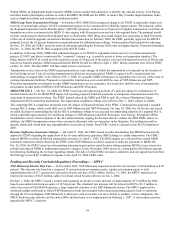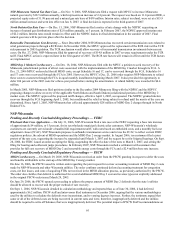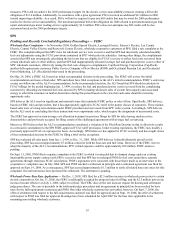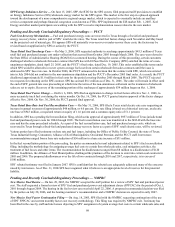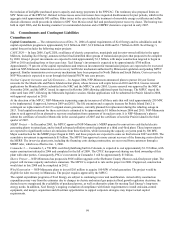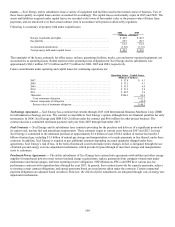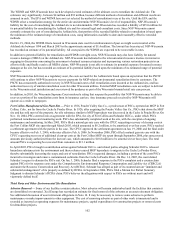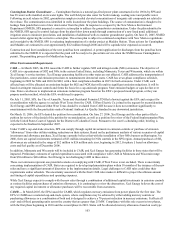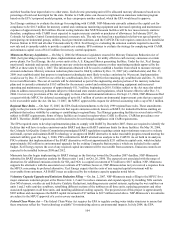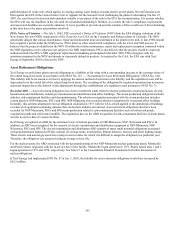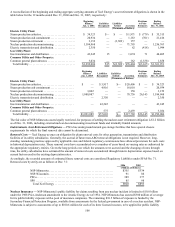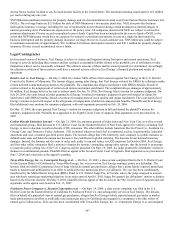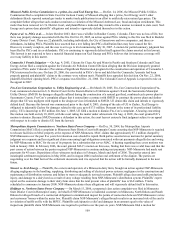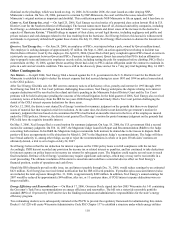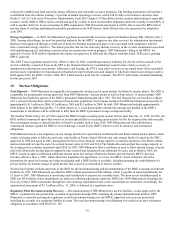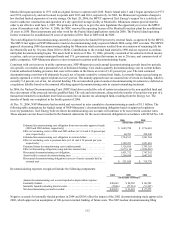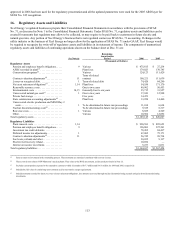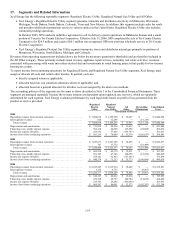Xcel Energy 2006 Annual Report Download - page 114
Download and view the complete annual report
Please find page 114 of the 2006 Xcel Energy annual report below. You can navigate through the pages in the report by either clicking on the pages listed below, or by using the keyword search tool below to find specific information within the annual report.104
and their baseline heat input relative to other states. Each electric generating unit will be allocated mercury allowances based on its
percentage of total coal heat input for the state. Similar to CAIR, states can choose to implement an emissions reduction program
based on the EPA’s proposed model program, or they can propose another method, which the EPA would need to approve.
Xcel Energy continues to evaluate the strategy for complying with CAMR. NSP-Minnesota currently estimates the capital cost for
compliance to be $10.3 million for mercury control and continuous monitoring equipment and increased operating and maintenance
expenses of approximately $4.8 million. Recent testing indicates that NSP-Wisconsin facilities will be low mass mercury emitters:
therefore, compliance with CAMR is not expected to require mercury controls or purchases of allowances. In February 2007, the
Colorado Air Quality Control Commission passed a mercury rule. The rule was based on a negotiated rule that was agreed upon by
participating environmental groups, utilities, local government coalitions, and the CAPCD. The rule requires controls to be installed at
Pawnee Station in 2012 and all other Colorado units by 2014. Xcel Energy is evaluating the emission controls required to meet the
new rule and is currently unable to provide a capital cost estimate. SPS continues to evaluate the strategy for complying with CAMR
and estimates capital costs of $14.5 million for mercury control equipment.
Minnesota Mercury Legislation — On May 2, 2006 the Minnesota Legislature enacted the Mercury Emissions Reduction Act of
2006 (Act) providing a process for plans, implementation and cost recovery for utility efforts to curb mercury emissions at certain
power plants. For Xcel Energy, the Act covers units at the A. S. King and Sherco generating facilities. Under the Act, Xcel Energy
must install, maintain and operate continuous mercury emission monitoring systems or other monitoring methods approved by the
MPCA at these units by July 1, 2007. The information obtained will be used to establish a baseline from which to measure mercury
emission reductions. Mercury emission reduction plans must be filed by utilities by Dec. 31, 2007 (dry scrubbed units) and Dec. 31,
2009 (wet scrubbed units) that propose to implement technologies most likely to reduce emissions by 90 percent. Implementation
would occur by Dec. 31, 2009 for one of the dry scrubbed units, Dec.31, 2010 for the remaining dry scrubbed unit and Dec. 31, 2014
for wet scrubbed units. The cost of controls will be determined as part of the engineering analysis portion of the mercury reduction
plans and is currently estimated at $10.3 million for the mercury control and continuous monitoring equipment and increased
operating and maintenance expenses of approximately $11.3 million, beginning in 2010. Utilities subject to the Act may also submit
plans to address non-mercury pollutants subject to federal and state statutes and regulations, which became effective after Dec. 31,
2004. Cost recovery provisions of the Act also apply to these other environmental initiatives. On Sept. 15, 2006, NSP-Minnesota filed
a request with the MPUC for deferred accounting of up to $6.3 million of certain environmental improvement costs that are expected
to be recoverable under the Act. On Jan. 11 2007, the MPUC approved this request for deferred accounting with a cap of $6.3 million.
Regional Haze Rules — On June 15, 2005, the EPA finalized amendments to the July 1999 regional haze rules. These amendments
apply to the provisions of the regional haze rule that require emission controls, known as BART, for industrial facilities emitting air
pollutants that reduce visibility by causing or contributing to regional haze. Xcel Energy generating facilities in several states will be
subject to BART requirements. Some of these facilities are located in regions where CAIR is effective. CAIR has precedence over
BART. Therefore, BART requirements will be deemed to be met through compliance with CAIR requirements.
The EPA required states to develop implementation plans to comply with BART by December 2007. States are required to identify the
facilities that will have to reduce emissions under BART and then set BART emissions limits for those facilities. On May 30, 2006,
the Colorado Air Quality Control Commission promulgated BART regulations requiring certain major stationary sources to evaluate
and install, operate and maintain BART technology or an approved BART alternative to make reasonable progress toward meeting the
national visibility goal. On Aug. 1, 2006, PSCo submitted its BART alternatives analysis to the CAPCD. As set forth in its analysis,
PSCo estimates that implementation of the BART alternatives will cost approximately $211 million in capital costs, which includes
approximately $62 million in environmental upgrades for the existing Comanche Station project, which are included in the capital
budget. Xcel Energy expects the cost of any required capital investment will be recoverable from customers. Emissions controls are
expected to be installed between 2008 and 2012.
Minnesota has also begun implementing its BART strategy as the first step toward the December 2007 deadline. NSP-Minnesota
submitted its BART alternatives analysis for Sherco units 1 and 2 on Oct. 26, 2006. The expected cost associated with the range of
alternatives for additional emission controls for SO2 and NOx is a capital investment of $7 million to $617 million. NSP- Minnesota
supports the alternative with the associated cost estimate of $7 million; however, NSP-Minnesota has not yet received a response from
the MPCA concerning its preferred alternative. Xcel Energy expects that the costs of any required capital investment will be
recoverable from customers. All BART issues are addressed by the voluntary capacity upgrades noted below.
Voluntary Capacity Upgrade and Emissions Reduction Filing — On Jan. 2, 2007, NSP-Minnesota made a filing to the MPUC for a
major emissions reduction project at the Sherco Units 1, 2 and 3 to reduce emissions and expand capacity by installing NOx controls
(low NOx burners, overfire air and Selective Catalytic Reduction), installing mercury control systems, replacing the wet scrubbers on
units 1 and 2 with semi-dry scrubbers, retrofitting different sections of the turbines on all three units, replacing generators and other
associated equipment on all three units, and installing additional cooling capacity. The projected cost of this project is approximately
$905 million and encompasses the BART capital investment of $7 million to $617 million noted above. NSP-Minnesota’s investments
are subject to the MPUC approval of a cost recovery mechanism.
Federal Clean Water Act — The federal Clean Water Act requires the EPA to regulate cooling water intake structures to assure that
these structures reflect the “best technology available” for minimizing adverse environmental impacts. In July 2004, the EPA


